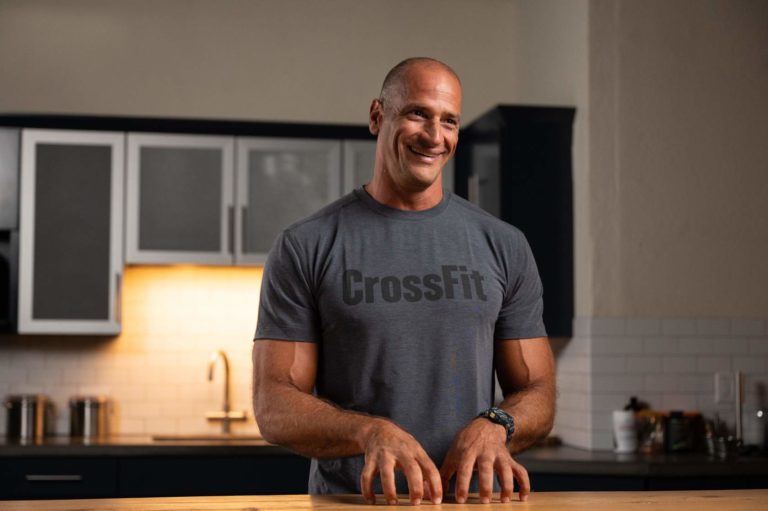The journey to optimal health and fitness isn’t a story of willpower alone — it’s a fascinating interplay of psychology, environment, and strategic decision-making. While countless 2025 resolutions have already fallen by the wayside, this reality reflects not a lack of desire but a misunderstanding of how lasting change occurs.
The transformative power of CrossFit’s methodology — constantly varied functional movements executed at high intensity combined with a diet of meats and vegetables, nuts and seeds, some fruit, little starch, and no sugar consumed in quantities that support exercise but not body fat — provides a clear pathway to extraordinary fitness. Do this persistently, and you will reach levels of health and fitness you never dreamed of.
It’s just that simple.
But why is it so hard?
Because we make it hard.
When we set our nutrition and fitness goals, we often fail to include an action plan that takes into account old habits, we have misinformation about willpower, or we set goals that are too audacious. Here’s how to use these three assets to achieve your goals.
The Action Plan
To eat and exercise better, you need a plan that automates dozens of decisions. This is why techniques like meal prepping, always having your gym bag ready, having a workout plan before you get to the gym, and blocking off your workout time on your calendar are so helpful. They reduce the need for you to make decisions in the moment.
Your plan must also address the triggers that lead to unhealthy habits, like snacking or reaching for comfort food. Identify your triggers, such as specific times of day, emotions (stress or anxiety), or locations (a friend’s house or a restaurant). Next, disrupt the pattern by replacing those triggers with healthy habits, like walking, reading, or engaging in a favorite hobby. You can take it a step further and input some new triggers and responses. For example, do 5 push-ups every time you walk from one room to another. Every time you pick up your toothbrush, set your timer for 2 minutes and air squat while you brush. Every time a commercial comes on, do 30 jumping jacks. The more triggers you can tie to healthy habits, the more progress you’ll make toward your goals.
Finally, setting up your environment for success is critical to the action plan. One simple, highly effective tactic is to remove hyper-palatable junk foods from your home or office and replace them with tasty whole foods. Get a timer you can schedule to turn on the space heater in your bathroom so when you wake up, you can walk into a warm and cozy room to change into your CrossFit clothes. Another is to take your TV out of your bedroom so you’re less tempted to get in bed and binge-watch something until you fall asleep. Creating environments that make the best choice the easy choice can go a long way toward helping you stay on track for the long term.
Willpower
Until recently, it was believed that willpower is a finite resource and gets used up throughout the day. You rely on willpower to avoid the snooze button, donuts in the breakroom, bread at a birthday lunch, and every other temptation put in front of you. When you finally get home, you’re drained of all willpower, so you fall onto the couch with a pint of ice cream while devouring reality TV reruns. You’ve been sold the story that you’re all out of willpower and are at the whim of your desires.
But is this really true?
Well, it’s true if you believe it’s true.
Recent research shows people who view willpower as a skill improve it through practice, while those who see it as finite often struggle.
Like a muscle, willpower responds to training. Each time you resist temptation, you’re not just winning a single battle but building mental strength for even greater challenges ahead. Through consistent practice, what once required tremendous self-control — like passing up that late-night ice cream — can become effortless, reshaping your relationship with temptation entirely.
The BHAG
Big, hairy, audacious goals ignite excitement and drive, but if they’re too far off in the future, it can cause frustration and a desire to quit. While it’s important to keep BHAGs in mind for inspiration, the key to success lies in focusing on small, incremental process goals that bring you closer to the bigger picture. For example, adding 10 grams of protein to your daily intake this week or committing to completing a proper warm-up before each workout are small, achievable steps that can build confidence and momentum.
Consider setting goals you’re 90 percent confident you can achieve. This approach creates a cycle of success, strengthening your resolve and propelling you toward even the loftiest ambitions with consistent, simple actions.
About the Author
 Stephane Rochet is a Senior Content Writer for CrossFit. He has worked as a Flowmaster on the CrossFit Seminar Staff and has over 15 years of experience as a collegiate/tactical strength and conditioning coach. He is a Certified CrossFit Trainer (CF-L3) and enjoys training athletes in his garage gym.
Stephane Rochet is a Senior Content Writer for CrossFit. He has worked as a Flowmaster on the CrossFit Seminar Staff and has over 15 years of experience as a collegiate/tactical strength and conditioning coach. He is a Certified CrossFit Trainer (CF-L3) and enjoys training athletes in his garage gym.
Comments on The CrossFit Approach to Building Healthy Habits
Stephane, thank you for continuing to put out such powerful articles...this is excellent.
The CrossFit Approach to Building Healthy Habits
1